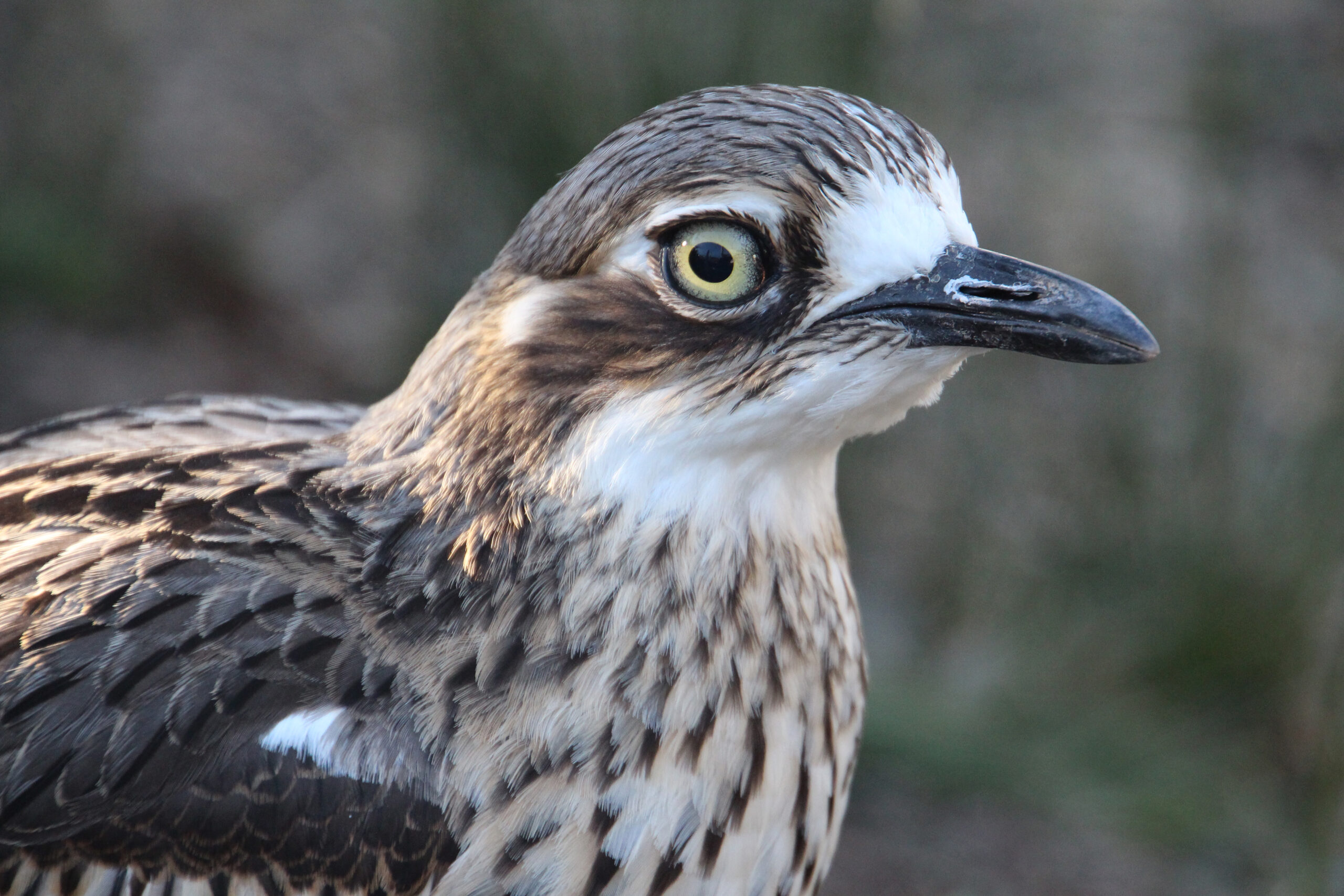| Common name | Cane toad |
| Scientific name | Rhinella marina |
| Type | Amphibian |
| Diet | Varied, including small rodents and other mammals, reptiles, bats, other amphibian and many invertebrates, plus plants, dog and cat food, and other household rubbish |
| Average lifespan | 5 – 10 years in the wild |
| Size | 15cm, occasionally up to 25cm in length |
The cane toad has developed quite the reputation for being the villain amongst Australia’s toad population, despite being purposefully introduced to the country from South and Central America in 1935. Considered an optimistic means of controlling pest beetles within the sugar cane industry before chemicals became widespread, the resilient cane toad is a voracious predator so looked suited to the job. Yet whilst the cane toad failed at the role of insect control, it became incredibly successful at reproducing and spreading itself.
Deemed one of the worst invasive species in the world, the cane toad has caused widescale damage to Australia’s vulnerable native wildlife since its introduction.
With dry and warty skin, the cane toad is a large species of toad with a light-brown or yellow-brown back with dark patches and spots. With a horizontal pupil, the iris is gold with characteristic spotting and the cane toad has large parotid glands on its shoulders which secrete toxins when the toad is threatened. The unique appearance of the adult cane toad makes it unlike any of Australia’s native species, yet young toads do look like many Uperoleia and Crinia species but lack colourful markings on the groin and backs of the thigh.
Breeding during any time of the year, the cane toad lays between a staggering 8,000 and 30,000 eggs at one time, in long strings in nearly all bodies of freshwater they can access. Black tadpoles are around 3cm in length and often swim together in schools at the bottom of the water body, taking an average of four to six weeks to develop into toads. In warm, tropical conditions, toadlets can reach adults size within the year, but this may take twice as long in cooler climates.
Needing constant access to moisture to survive, the cane toad absorbs water through the skin on its belly from dew, moist sand, or other moist environments. Cane toads can die from water loss or from absorbing too much water if they are forced to stay in flooded conditions.
With no natural predators, the cane toad dines mostly on insects, but they will eat almost anything including birds, other frogs and toads, reptiles, small mammals and even pet food and human rubbish!
The milky poison, called bufotoxin, within the toad’s parotid glands can kill both domestic pets and Australian native species when animals bite, lick, or eat them. The cane toad also outcompetes native fauna for resources like breeding habitat and food and there has been massive ecological damage documented as the toad expands into new parts of the country in strong numbers.
Infiltrating other parts of the world including Florida, Hawaii, the Philippines, the Caribbean islands, the western Pacific islands, and Papua New Guinea to name a few, the cane toad has no known predators or diseases to control its population growth. Often accidently transported within Australia to new locations, in pots plants or unsuspectingly within cars or trucks, cane toads have now surpassed Australia’s northern landscape and are moving westward at an estimated 40km – 60km per year.
Scientists admit there is unlikely to ever be a broadscale method of controlling cane toads within Australia. However, it is possible to control cane toad numbers in small areas, such as around a specific creek or pond, by collecting the cane toad’s long jelly-like egg strings from the water or disposing of the adult toads humanly.
Research is underway into understanding the toad’s impact on native fauna and to investigate the adaptations of native species since the arrival of the cane toad and how vulnerable species can be protected moving forward.





